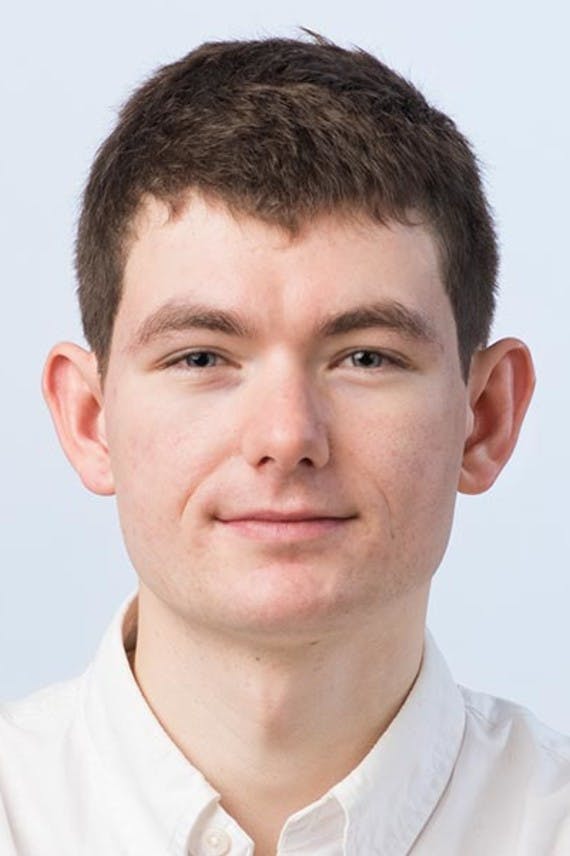How is mParticle different from other Customer Data Platforms?
With so many vendors calling themselves Customer Data Platforms (CDPs), it can be difficult to separate the signal from the noise. This articles explains how mParticle is different from other CDPs on the market.
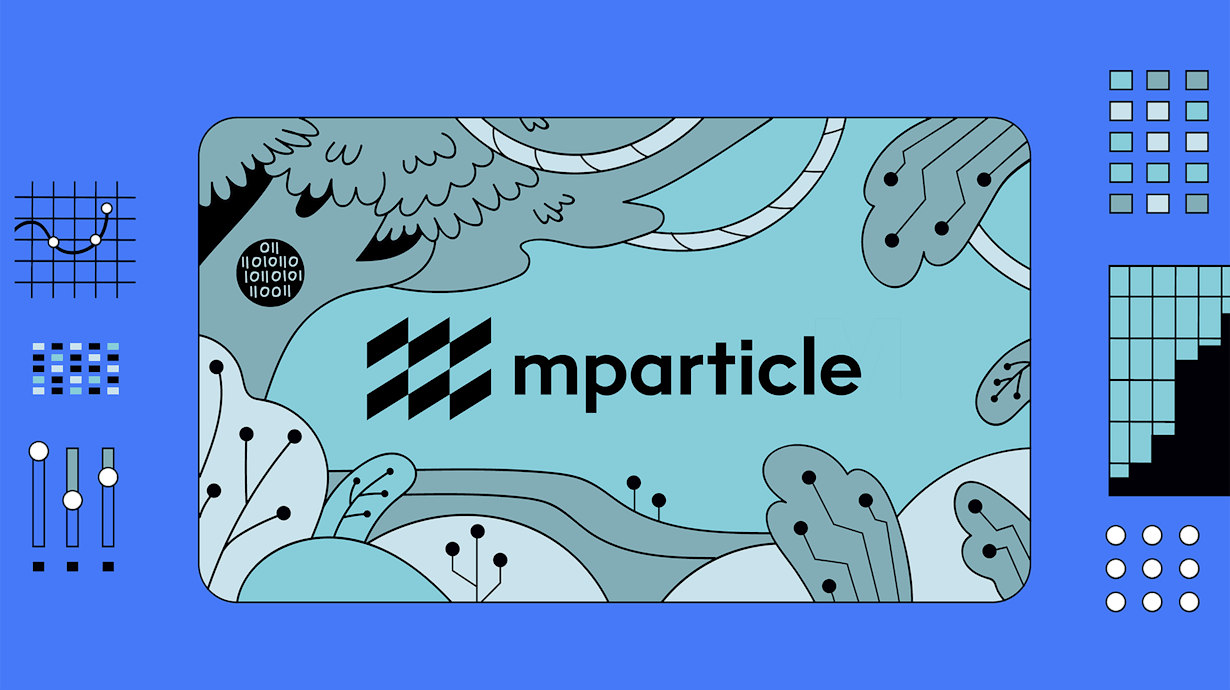
Increased complexity is a natural byproduct of growth. As the number of engagement touchpoints (stores, mobile apps, websites) increases and the set of systems being used to support the customer experience (analytics, email, CRM, customer service, data warehousing, etc.) expands, the amount of data that needs to be collected and organized increases exponentially.
Consequently:
- Customer data needs to be connected across tools to eliminate data silos and create a single source of truth
- Cross-channel data needs to be unified into complete customer profiles to support data privacy and personalization
At first this complexity may be manageable—an unavoidable cost of growing the business. But over time, these additional systems and the workflows required to maintain them can become unmanageable, and can in fact become the primary inhibitor to continued growth.
Modern data challenges require modern data solutions, and many have turned to Customer Data Platforms (CDPs) to simplify their customer data pipeline.
But the CDP market is expansive and diverse. At a first glance, all vendors look the same, presenting strikingly consistent architecture diagrams and feature lists.

The hardest-working diagram in the industry.
In reality, not all Customer Data Platforms are created equal. A few common differentiators:
- Data quality: Although many vendors promise advanced data activation capabilities, downstream activation will only be as effective as the quality of data in the system. Not all Customer Data Platforms help you address the quality of data flowing into the platform.
- Data privacy: Privacy and compliance need to be integrated into your data flows from the point of collection to support responsible data usage. Many CDPs see data privacy as someone else’s problem.
- Real-time: Speed matters. Marketing in the moments that matter can be the difference between success and failure. Not all CDPs provide an architecture that allows you to collect, access, and activate data in real time.
mParticle’s vision is to help teams accelerate the speed at which high-quality customer data moves throughout the organization so that they can maximize value for their customers. To accomplish this, we focus not only on helping teams activate their data, but also on ensuring that the data being activated is as high-quality as possible.
“You have a lot of CDPs out there nowadays. The vast majority of CDPs are solving the part of the problem that is very apparent, that most marketers can see. It’s like the part of the iceberg that has emerged above the surface. So they’ll focus on segmentation, audience insights, and marketing output. Our belief, as customer data infrastructure, is that everything beneath the surface is where the value is created or lost.” - Michael Katz, CEO and co-founder of mParticle
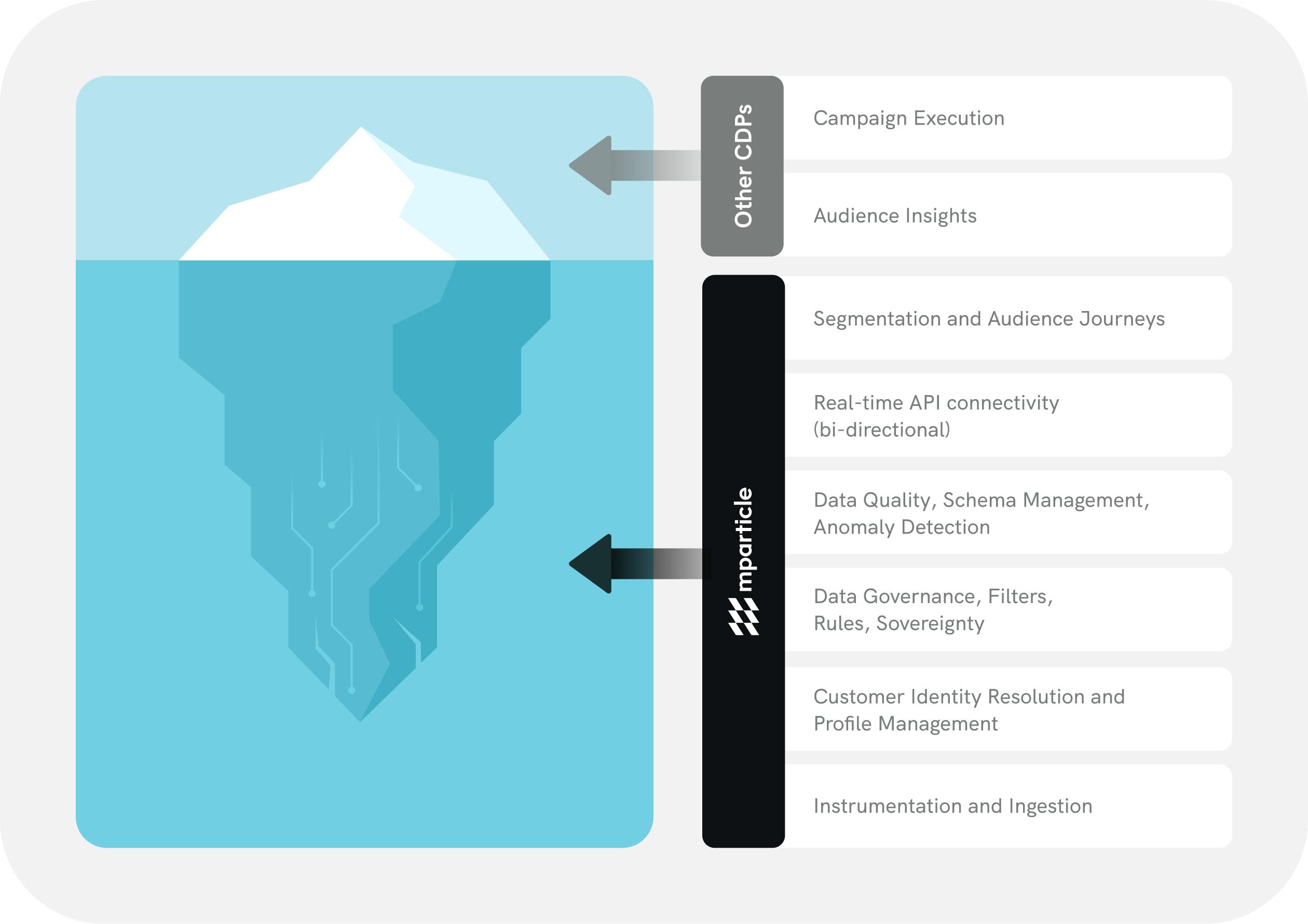
Easy and flexible data ingestion
The challenge of collecting data events across every touchpoint where customers engage (web, mobile, OTT, point of sale, etc.) is one of the biggest factors limiting companies’ ability to drive business results with customer data. When data collection is restricted to a narrow selection of sources, you’re left drawing insights from a piecemeal view of the customer journey. mParticle provides native SDKs, APIs, and a diverse set of partner feeds, enabling you to collect data from all customer touchpoints.
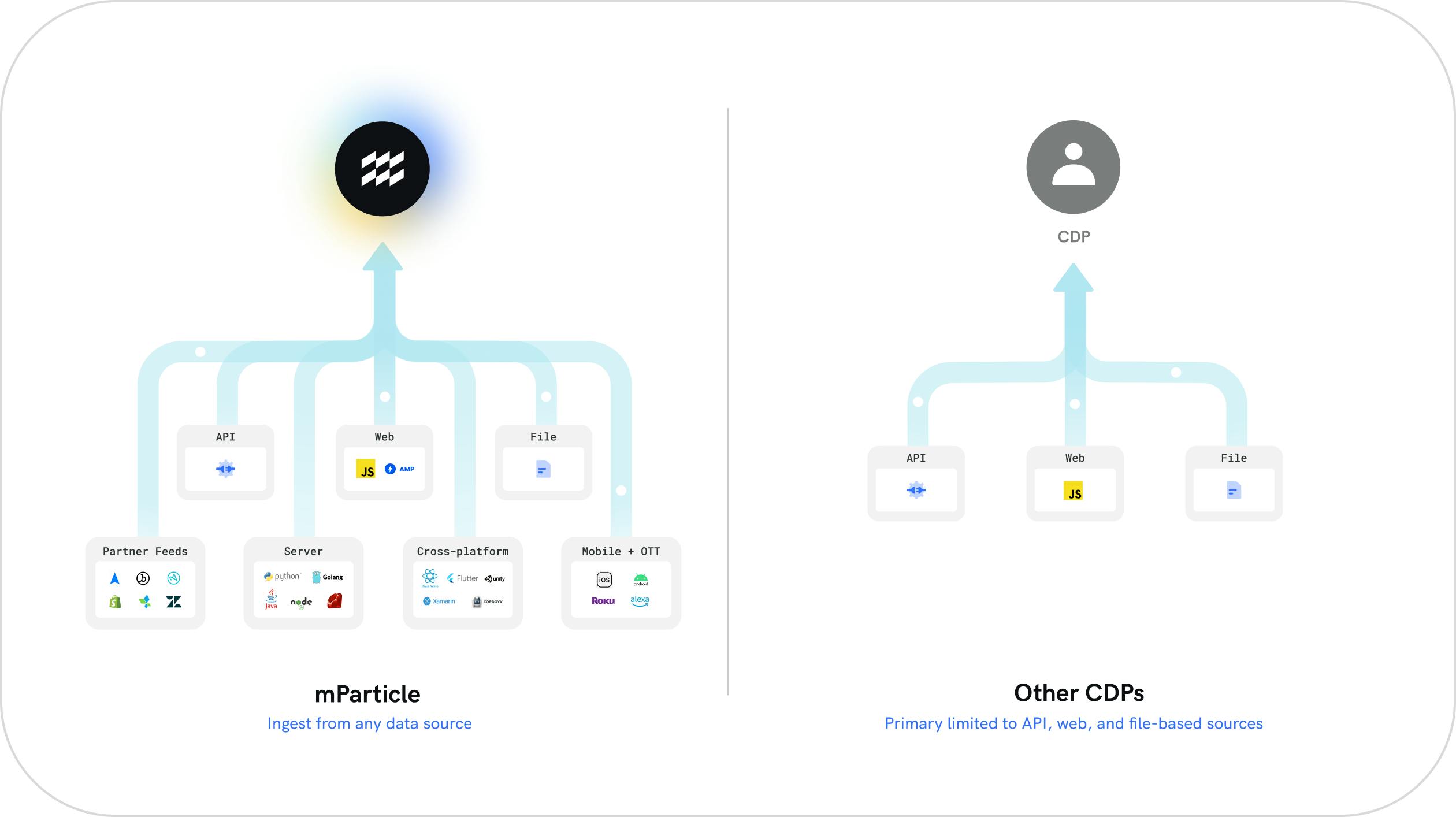
Configurable and transparent identity resolution
As the number of data sources increases, so too does the importance of identity resolution. Identity resolution is the process of tying data related to a unique user from a particular channel to data also related to that unique user collected from other channels. Each channel uses a different identifier to associate a user’s data in that channel to the user, such as Apple IDFA for iOS and Android Device ID for android. Your identity resolution architecture, therefore, must define how and when to resolve those channel-level identifiers to a universal, cross-channel user profile.
The way in which you perform identity resolution is unique to your business, and can have significant effects on data privacy, data quality, and the type of customer experiences that you’re able to deliver. There are many factors to consider based on your business needs, such as when to converge anonymous to known profiles and how to detect and merge duplicate profiles.
As opposed to offering an obscure, one-size-fits-all identity resolution architecture, mParticle provides a highly-configurable, deterministic identity solution.
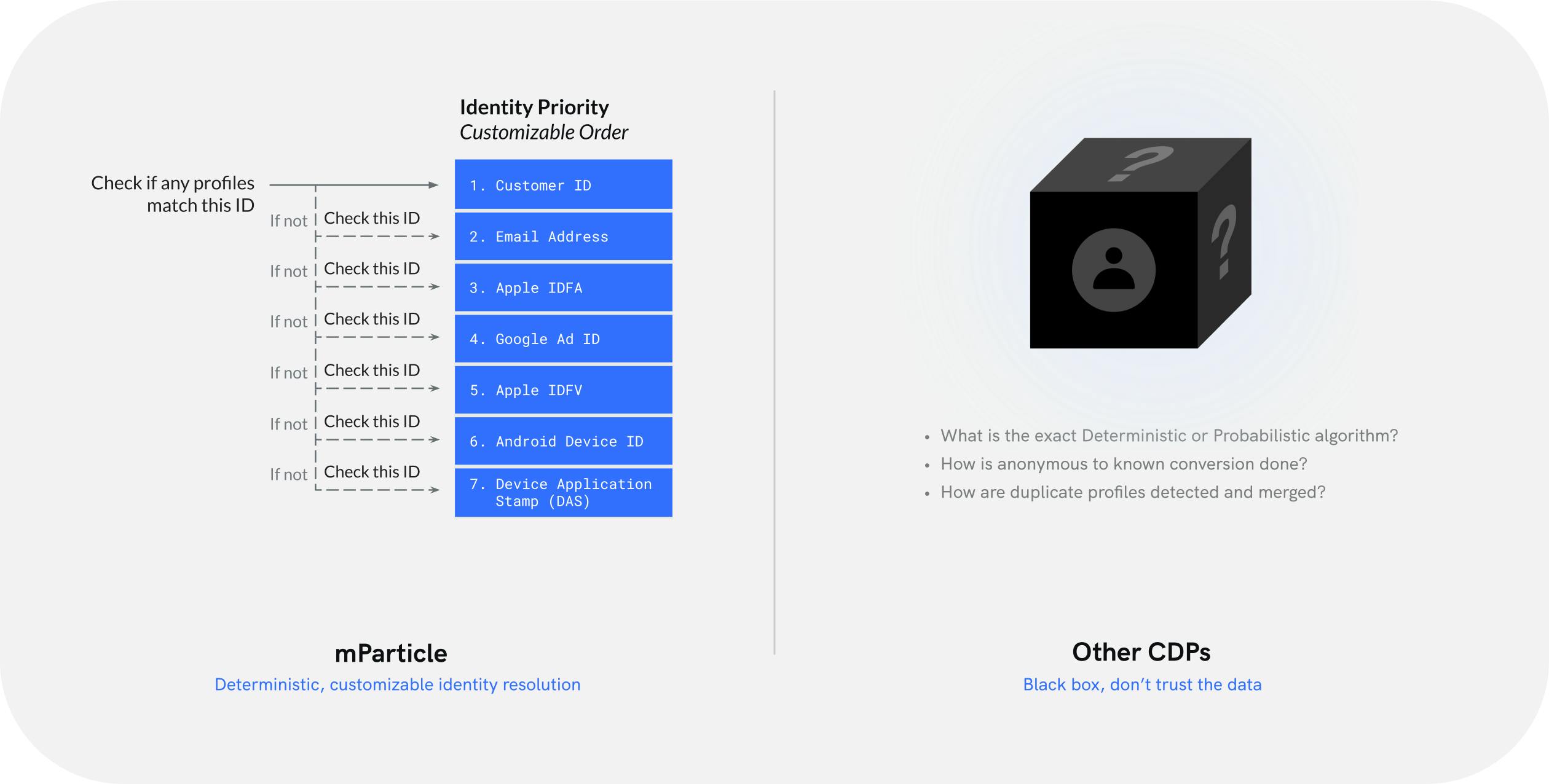
With control over your identity hierarchy and profile merging rules in mParticle, you’re able place a higher level of trust in the customer profiles in your data set.
Below is a brief demo of how identity resolution works in mParticle.
Real-time streaming architecture
Today’s customers move fast. To keep pace, you need a customer data infrastructure in place that enables you to deliver contextual experiences in real time. Whether it’s the home screen of your mobile app, the language of a transactional email, or an ad shown on Twitter, successful personalization depends on having access to the most up-to-date customer data, and on being able to activate that data quickly.
While batch processing is suitable for ad hoc initiatives, such as training a machine learning model, problems can arise if you power real-time use cases with non-real-time data.
- Wasted marketing budget: Gartner estimates that enterprise brands dedicated 11.5% of their marketing budget to paid advertising on average in 2019. If your ad targeting is based on customer data that is being processed in batch, you may be delivering experiences based on out-of-date data. This can lead to inefficiencies, such as serving acquisition ads to a customer that has already made a purchase.
- Poor customer experiences: As customers engage with your brand, they are communicating preferences and interests on an ongoing basis. If you’re unable to access and activate this data in real time and are powering engagement systems with out-of-date data points, you risk delivering experiences that are not in line with your customers’ present interests.
- Regulatory compliance violations: One of the biggest adaptations consumer brands have had to make in recent years is reforming their systems to comply with GDPR and CCPA. If your data collection architecture is still processing events in batch, your downstream systems may not be receiving consent status updates until hours, or even days after opt-out. In order to support compliance, it’s critical for your systems to be able to process consent status changes in real time.
- Inefficient reporting: Leading product managers are constantly testing features and analyzing how customers are engaging. If your product engagement data is being loaded into analytics tools through batch processing, your testing process will be much slower, and you may encounter gaps in your reporting.
Without access to real-time customer data, you also miss opportunities to satisfy your customers’ needs at that moment. For example:
- Sending an offer at the moment your customers is browsing lunch options
- Sharing a discount when you know your customer is comparing your product to a competitor’s

For an example, check out this case study covering how Burger King used mParticle to power real-time data connection for their award-warning Whopper Detour campaign.
Streamline your website integrations
Learn which third-party integrations you could replace by adopting mParticle

Deep insights (powered by Indicative)
Reliable analytics is a fundamental requirement for data stakeholders. Product Marketing and eCommerce teams need to understand which features are being adopted and where in the funnel users are dropping off so that they can build better product experiences. Marketers and Customer Experience teams need to understand their entire customer journey, which channels (advertising, email, mobile push, in-store, etc.) are driving users through the customer journey, and which messages are resonating.
Teams traditionally have relied upon BI tools such as Tableau and Looker to answer these questions. But BI tools are built for data analytics teams–they sit on top of the data warehouse and require SQL knowledge for querying, forcing non-technical teams to submit a ticket every time they need an insight.
mParticle Indicative allows non-technical teams to access self-service analytics and answer their questions without knowledge of SQL. Indicative’s powerful analytics tooling allows you to perform cohort analysis, multipath funnel analysis, design journeys, and more. You can also create custom dashboards and reports to share with stakeholders across the business.
Integrated governance to solve for privacy
When it comes to customer data privacy, there is no margin for error. Salesforce’s 2020 State of the Connected Customer reported that 83% of consumers are concerned about sharing personal data online and 72% would stop buying from a company or using a service because of privacy concerns.
As data becomes siloed in disparate systems, essential governance capabilities such as servicing data subject requests, filtering advertising audiences by consent state, and monitoring data subject request statuses must be handled manually, an expensive and error-prone process.
mParticle provides a comprehensive set of customer data privacy features that allows you to automate data subject erasure requests and control how data flows across your tech stack based on consent state.
Clean data throughout your stack
As the Customer Data Platform category rose in popularity, vendors from disparate categories flocked to join the space, repositioning their offerings in order to capture market interest. Many of these vendors came to the CDP space from a background in segmentation and activation, often offering the same last mile delivery that you’d see from CRM and ESP vendors. These CDP vendors have paid very little attention to the important parts of the data process that occur before activation–namely data quality management.
Downstream activation will only be as effective as the quality of data flowing through the system. mParticle offers an extensive suite of data quality and data planning features that enable you to trust your customer data pipeline.
- Data Master: Data planning, validation, and enforcement that allows you to build a scalable, cohesive data strategy with plans everyone can get behind. Create a pipeline of consistently clean, accessible data for all stakeholders and downstream systems.
- Developer tools: Ensure proper event collection at run time with Smartype, mParticle Linting, and CLI.
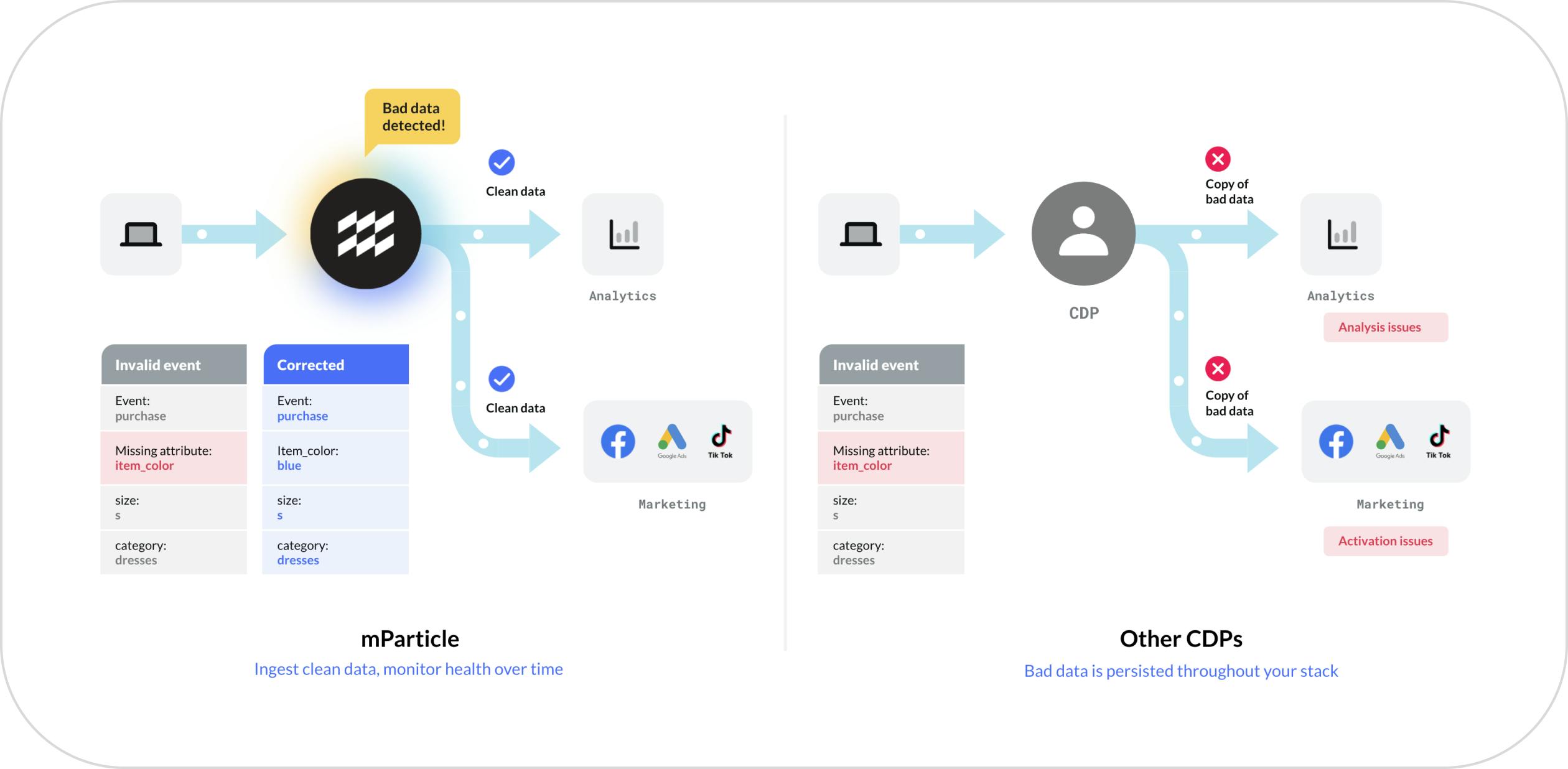
Deeper integrations to unlock activation use cases
A Customer Data Platform is a system of movement, but not all movement is created equal. The quality of integrations offered by different CDP vendors varies widely. For example:
- Some share data in batch while others stream data in real-time
- Some connect dynamic segment lists while others share only audience membership attributes
mParticle provides 300+ enterprise-grade integrations that enable you to access the customer data you need, when and where you need it.
- Event: Connect high-quality customer data to downstream tools in real time with any engineering support.
- Audience: Build dynamic segments in mParticle and connect them to CRM, messaging, and media system destinations in just a few clicks. Audience membership updates are forwarded downstream in real time as new data is collected into mParticle.
- Feed: Collect data from CRM, ESP, Attribution, and more SaaS vendors and unify with behavioral data on mParticle customer profiles. Combine outbound integrations with feed integrations to design bi-directional data flows.
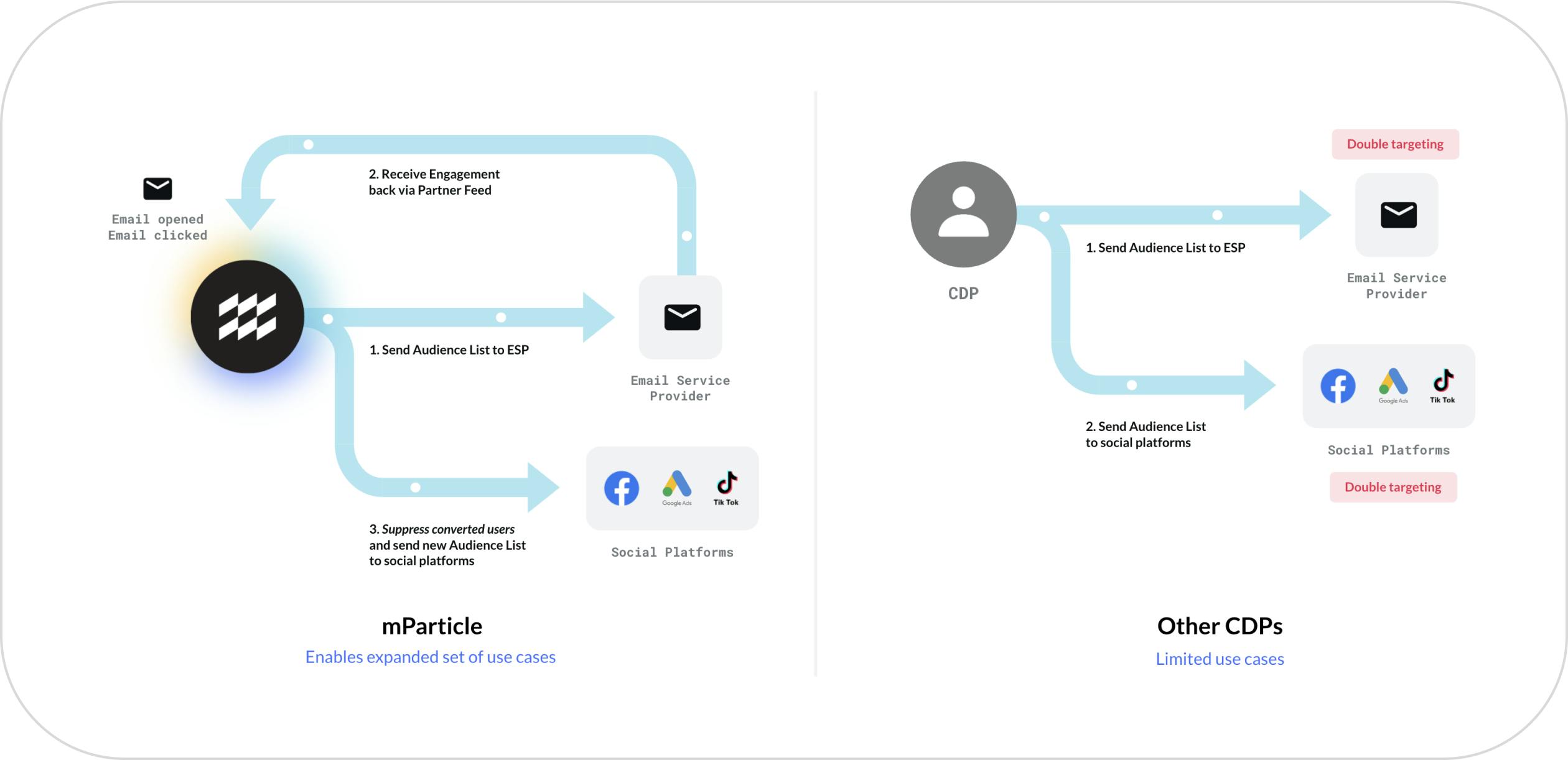
Furthermore, Data Filter allows you to control which customer data is sent to each destination at the event and attribute level, allowing you to manage data governance and control costs.
With a diverse set of high-quality integrations, it’s possible to get more out of the tools in your stack and power use cases, such as:
- Personalized customer experiences
- Real-time product and journey analytics
- More relevant customer service
- Real-time ad and messaging suppression
- Multi-channel journey building
And much more. Learn more about how you can leverage mParticle to do more with your favorite tools in our integration use case library.
The world of customer data moves fast. Tracking requirements evolve as you build new product features, launch new campaigns, and add new tools to your tech stack. Data governance requirements change with the introduction of regulations such as GDPR and CCPA and platform shifts such as Apple AppTrackTransparency (ATT).
When the only constant is change, the most important determinant of long-term success is adaptability. mParticle provides the adaptability you need to execute your customer data strategy over time. With high-quality identity resolution, data quality, and data governance tooling, as well as extensive data collection and integration capabilities, mParticle enables you to activate data successfully even as internal and external conditions change over time.
